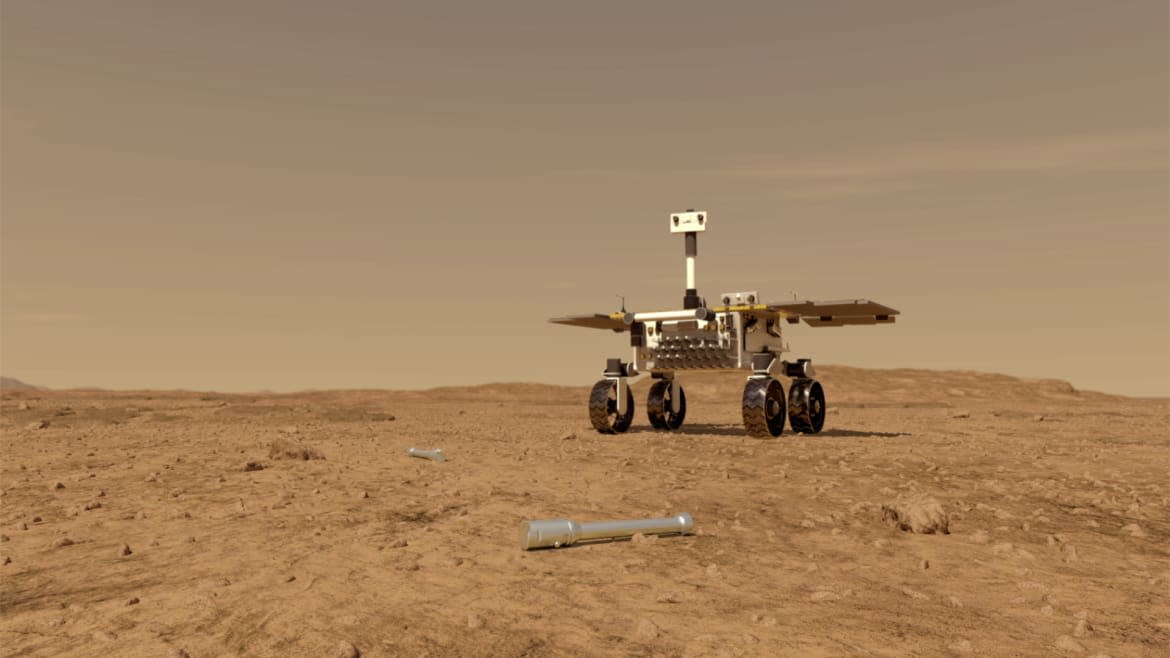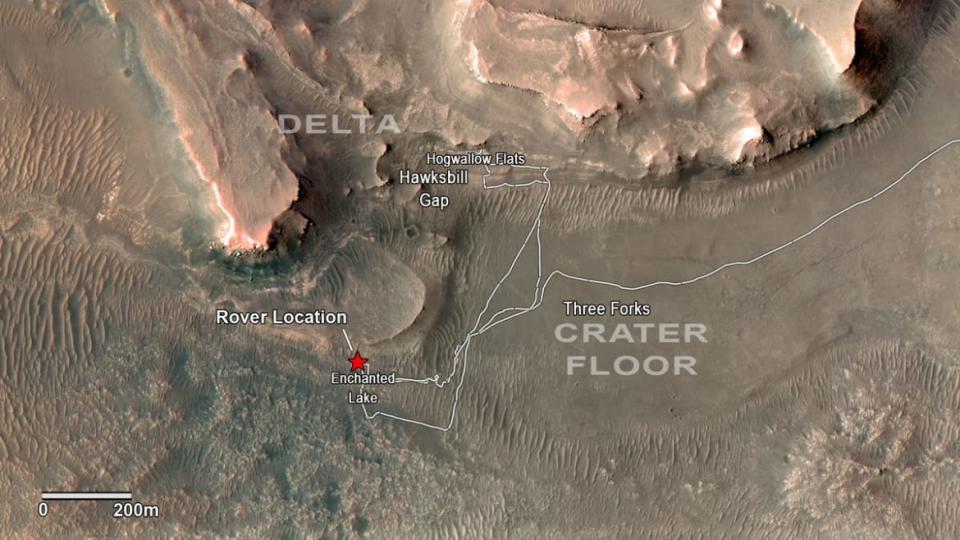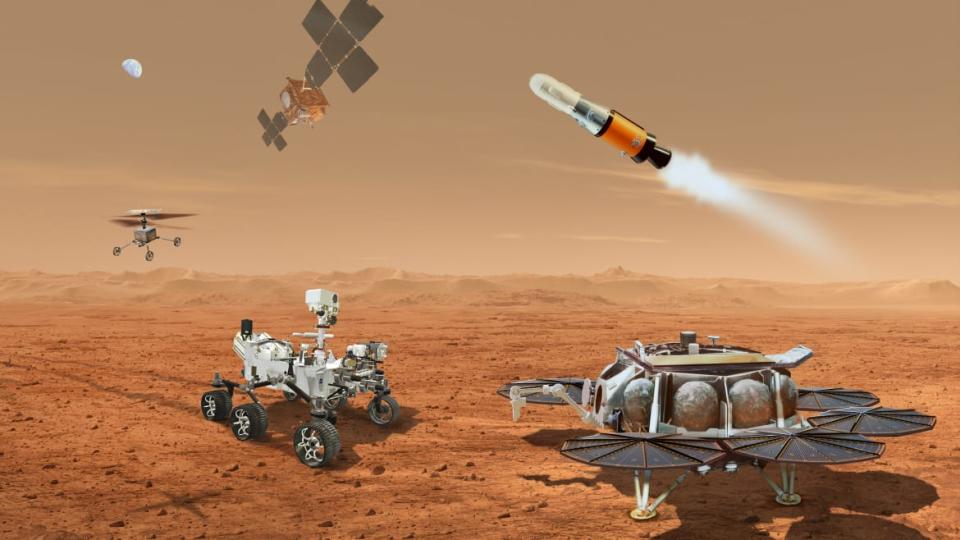NASA Picks First Mars Rock Samples to Launch Back to Earth

NASA’s Perseverance rover has been collecting soil, rock, and air samples on the Martian surface for more than a year—and now, its hard work is ready to pay off. The agency has announced that it has chosen the first cache of samples to be sent back to Earth someday. Once in hand, the samples could even give insights into whether or not life exists on Mars.
Since landing on the Red Planet in February 2021, the Perseverance has amassed a collection of 14 different samples from throughout the Jezero Crater. Of that collection, researchers have chosen 10 samples that will be dropped off at a pick up location in an area dubbed Three Forks. There, the samples will sit until a future mission called the Mars Sample Retrieval Lander arrives to snag it in 2030.
“Never before have a scientifically-curated collection of samples from another planet been collected and placed for return to Earth,” Thomas Zurbuchen, NASA associate administrator for science, said in a statement. “NASA and ESA have reviewed the proposed site and the Mars samples that will be deployed for this cache as soon as next month. When that first tube is positioned on the surface, it will be a historic moment in space exploration.”

The Perseverance rover's route to Three Forks.
The timeline for the mission will most certainly be a bit of a moving target (a NASA tradition at this point). The agency is planning to establish the sample retrieval depot next year. This zone will consist of the tubes containing rock and soil samples discarded on the floor of Three Forks until they can be safely retrieved next decade and brought back to Earth.
The retrieval mission includes a number of downright sci-fi elements that are brand new for space exploration. First, the Sample Retrieval Lander will use a robotic arm to pick up the samples off the floor. Perseverance will also directly transfer a number of samples contained in its belly to the lander. If the arm fails to scoop up the collection, two helicopter drones will also be on hand to snag them up if needed.
From there, the samples will be transferred to a rocket that will blast off the surface. A satellite dubbed the Earth Return Orbiter will be waiting in Martian orbit to catch the samples. From there, the orbiter will then jettison the collection towards Earth in a separate spacecraft that will hopefully splash down into the ocean for an easy pick up.

A chaotic illustration of the Mars Sample Return mission.
“Choosing the first depot on Mars makes this exploration campaign very real and tangible. Now we have a place to revisit with samples waiting for us there,” David Parker, the European Space Agency’s director of Human and Robotic Exploration, said in a statement.
Keep in mind that this isn’t just any ordinary rock collection. They’ll be the very first rock and soil samples ever collected from another planet. The insights that scientists can glean from them could reveal how Mars was formed and even whether or not life could (or does) exist on the Red Planet. As such, researchers are downright salivating for their return.
It’s a massive undertaking—but once completed, it’ll mark a massive milestone for space exploration. It’ll also put every other rock collection on Earth to shame.
Got a tip? Send it to The Daily Beast here
Get the Daily Beast's biggest scoops and scandals delivered right to your inbox. Sign up now.
Stay informed and gain unlimited access to the Daily Beast's unmatched reporting. Subscribe now.

